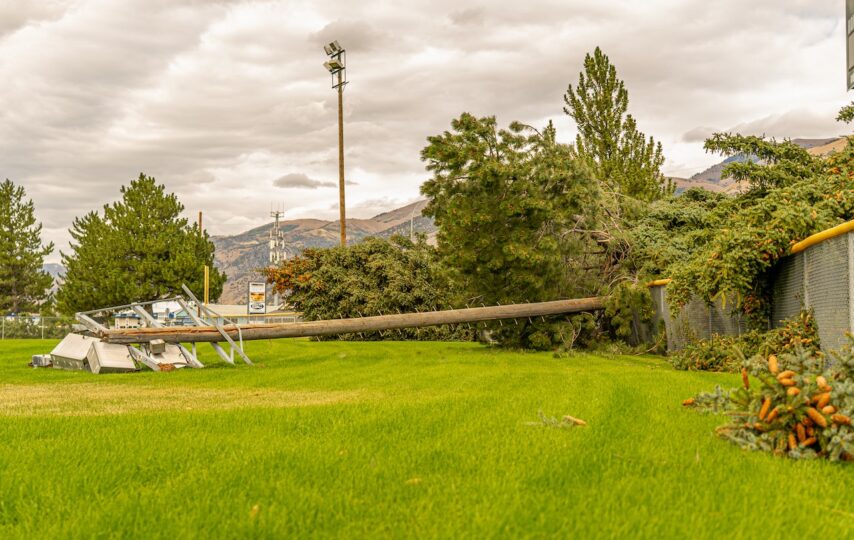When a storm hits, and the winds howl, trees often bear the brunt of the damage. Fallen trees can wreak havoc on your property, neighborhood, and peace of mind. In this article, you will discuss the dangers of fallen trees and outline the steps you must take after a storm, including using an emergency tree service.
So, be prepared, stay safe, and confidently manage the aftermath of storm damage.
Dangers of Fallen Trees
Risks and Hazards of Fallen Trees
Fallen trees pose several risks and hazards. While a tree may appear stable, hidden dangers could lurk beneath the surface. Branches can break off and cause injury or damage, or the tree could shift and collapse on people, animals, or property.
Potential Damage to Property and Infrastructure
The potential damage to property and infrastructure from fallen trees is significant. Trees can cause structural damage to buildings, crush vehicles, block roads, and disrupt utility services. Additionally, the roots of fallen trees can damage underground pipes, septic systems, and other buried infrastructure.
Health and Safety Concerns for Humans and Wildlife
Fallen trees also pose health and safety concerns for humans and wildlife. People can be injured or killed by falling limbs or trees, and animals may be trapped or injured. Hazardous materials like chemicals or fuel can also create additional health risks.
What to Do in the Event of Fallen Trees After a Storm
Assessing the Damage and Safety Risks
Before you can begin the cleanup process, assessing the damage and safety risks is essential. Evaluate the stability of the tree, the potential for additional damage, and the presence of any hazardous materials. If you need help with what to look for or how to proceed, consider contacting a professional emergency tree service.
Contacting Emergency Services and Utility Companies
Once you’ve assessed the situation, it’s time to contact the appropriate emergency services and utility companies. If there is an immediate danger to people or property, call 911 or your local emergency number. Additionally, contact your utility providers if there is damage to power lines, gas lines, water mains, or other essential services.
Securing the Area and Marking Hazards
Secure the area around the fallen tree and mark any hazards to prevent further injury or damage. That may include setting up barriers, using caution tape, or placing warning signs. Keep a safe distance from the tree, especially if power lines are involved.
Formulating a Plan for Tree Removal or Trimming
Next, you’ll need to formulate a tree removal or trimming plan. It will depend on the size and location of the tree, as well as any remaining hazards. You may be able to handle smaller branches and debris on your own, but larger trees or more complex situations may require the help of an emergency tree service.
Utilizing Proper Tools and Equipment for Tree Cleanup
The final step is to utilize the proper tools and equipment for tree cleanup. It may include chainsaws, pole saws, loppers, other pruning tools, and safety equipment like gloves, goggles, and hard hats. Safety should always be your top priority when dealing with fallen trees.
Challenges You May Come Across
Dealing with Blocked Access and Disrupted Utilities
Blocked access and disrupted utilities are common challenges following a storm. You may need to work with neighbors, local authorities, and utility companies to clear roadways and restore essential services. Patience and cooperation are key in these situations.
Managing Debris and Cleanup
Managing debris and cleanup can be daunting, especially for larger trees or multiple properties. Consider enlisting the help of friends, neighbors, or a professional tree service to share the workload and make the process more efficient.
Navigating Insurance Claims and Legal Considerations
Finally, you’ll need to navigate insurance claims and legal considerations. Document the damage with photos or videos, gather any necessary paperwork, and contact your insurance company to file a claim. You may also need to consult with an attorney or your local government to ensure compliance with any regulations or ordinances related to tree removal and property damage.
Conclusion
In the aftermath of a storm, fallen trees can pose significant dangers and challenges. By following the above-mentioned steps and considering using an emergency tree service, you can safely and efficiently manage the situation. Remember always to prioritize safety, and don’t hesitate to enlist the help of professionals when needed.













